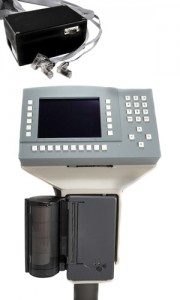National Softdrink Vending: remote monitoring system
The Challenge:
How to increase the efficiency of servicing remote vending machines.
Inefficiencies in vending machine stocking, inventory and back-office integration led Bellatrix to develop a new system in partnership with a top-3 softdrink distributor. The current process was time-consuming and labor intensive. For each machine, drivers were required to:
- Leave the truck and walk to the individual machine.
- Unlock the machine, retrieve the money, and manually count and record the products.
- Return to the truck for new stock.
- Return again to the machine(s) to reload products.
At the end of the day, the home office used manual ‘pen and paper’ reporting to collect the inventory and payment information for upload into the company’s back-office systems.
To further complicate the process, the supply system relied on multiple types of vending machines, all equipped with different mechanisms for dispensing product. Any new system that was developed needed to be compatible with all of these machines and the multitude of components.
The Solution:
 Working closely with the vendor, Bellatrix performed a comprehensive business analysis. We examined the current procedures, identified specific business needs, and determined gaps between the current reality and future goals. Then we proposed solutions for addressing each problem.
Working closely with the vendor, Bellatrix performed a comprehensive business analysis. We examined the current procedures, identified specific business needs, and determined gaps between the current reality and future goals. Then we proposed solutions for addressing each problem.
To alleviate the need for multiple trips to each machine by the driver:
- We created technology that looked ‘into’ the machines and provided drivers with inventory levels before they left the truck. This was a new, universal way for the vending machines to collect inventory data and send it to the truck:
- Sensors attached by strong magnets detected the electronic fields of the vending machine’s dispenser motors.
- A small computer unit in the machine translated and stored the inventory data collected by the sensors.
- Each machine was equipped with an RF antenna that transmitted the collected data to the trucks when queried.
- Trucks were equipped with RF antennas and computers bolted into the vehicle. The truck’s computer requested and received stock levels from the vending machine in real-time, via RF signals.
- A hardened, military-grade planar monitor (the same ones used in fighter jets) on the truck’s computer displayed all the vending machines and their inventories within a multiple-block radius.
- Since the Bellatrix computer received the machine’s current inventory levels, it printed a re-stocking list for every machine being serviced on the route. Before leaving the truck, the driver had the machine’s pick list.
To automate and streamline the data-transfer process with the home office, we developed a software communication system:
- At end of day, when the trucks returned to their home-bases, inventory information was automatically transmitted to the back-office computer network via wireless technology.
- New middleware software seamlessly moved information between the data collection PC, mid-frame and mainframe systems. The software component of this project required development expertise in several languages for the different types of computers, including C and C++.
The Outcome:
The result was a hardware system and automated process approach that:
- Provided flexible and relatively low-cost deployment per machine:
- We used the same data collection approach/equipment across a large variety of machine types, reducing the need for multiple hardware deployments. By using a universal attachment scheme for the sensors, the machines didn’t have to be permanently altered.
- Increased efficiency and productivity:
- Drivers knew – before stepping out of their trucks – the exact inventory they needed to refill the machine(s) they were servicing in a given area. They took only one trip to each machine.
- Increased analysis capabilities:
- All the data for each driver’s route was automatically downloaded into the company’s back-office system for analysis as soon as the trucks returned from their routes, no longer requiring time-consuming manual input.
Services:
- Electronic Engineering
- Mechanical Engineering
- Software Engineering (4 different types of software for different hardware)
- Radio Frequency (RF) engineering
- Wide Area Network (WAN) engineering
- System Analysis and Engineering
- Resource Integration (team management)
Technologies:
- Low power devices
- Remote monitoring
- Radio Frequency (RF)






